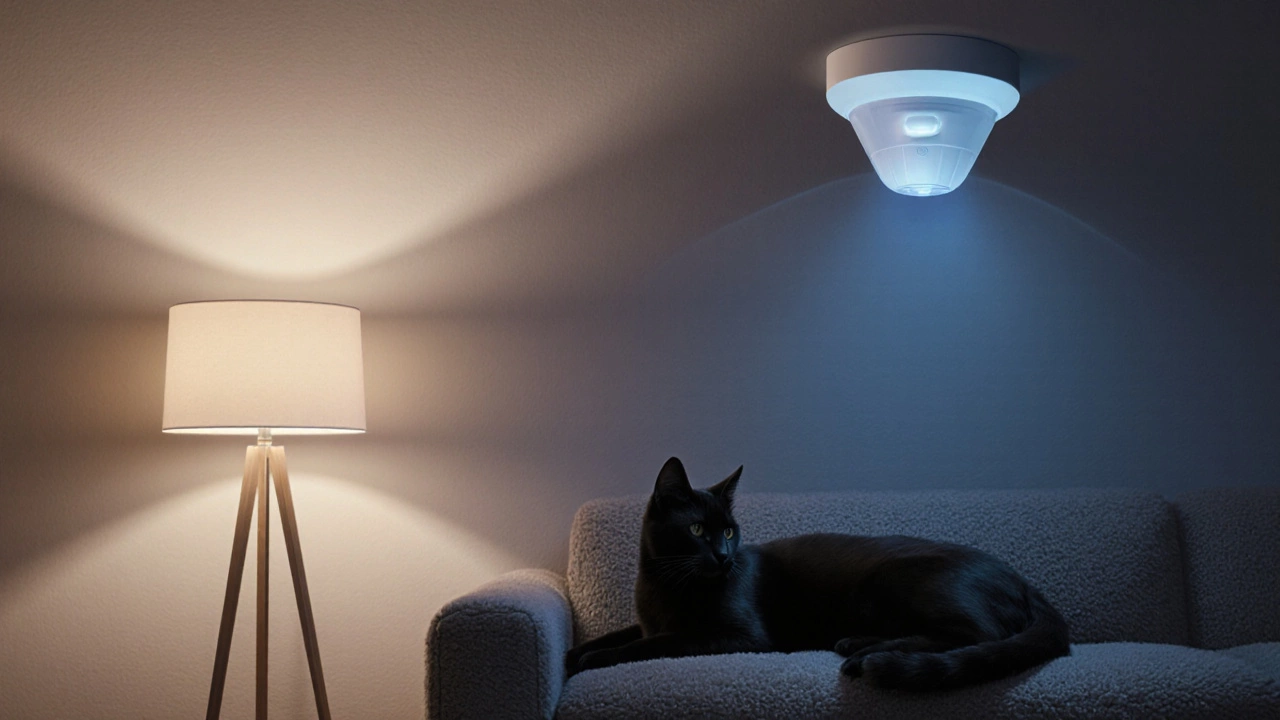When dealing with pet-friendly alarm issues, the challenges that arise when traditional security systems react to pets' movements or noises. Also known as pet‑triggered alarm concerns, you’ll often find barking dogs setting off sound sensors, or motion sensors mistaking a cat’s sprint for an intruder. The core alarm system may generate false alerts, leading to wasted police calls and annoyed neighbours. Repeated noise complaints turn a simple pet‑friendly alarm issue into a legal hassle that can cost money and strain community relations. Pet‑friendly alarm issues encompass three main angles: the sensor technology that misreads animal activity, the acoustic environment that amplifies pet sounds, and the policy side where landlords or councils step in over repeated false alarms. Understanding these angles helps you match the right tool to the right problem. For example, a basic PIR (passive infrared) sensor triggers on any heat change, so a dog running past will set it off just as easily as a human intruder. Dual‑tech sensors that combine PIR with microwave detection can differentiate between the size and speed of a moving target, dramatically cutting down on pet‑related false alarms. Audio‑activated alarms that rely on decibel thresholds often react to a dog’s bark, but a narrow‑band filter tuned to human speech frequencies can ignore most pet noises while still catching a window break or a forced entry. Another layer is the alarm system’s reporting chain. Many providers automatically contact local police when an alarm trips, regardless of the cause. If a pet repeatedly triggers the system, you may end up with a string of unnecessary police visits, which not only wastes public resources but can also lead to fines under nuisance regulations. Some modern platforms allow you to set ‘quiet hours’ or to receive a real‑time mobile alert before the system escalates, giving you a chance to silence the alarm manually. In multi‑unit buildings, a single pet‑triggered alert can disturb an entire floor, raising complaints from other residents and prompting building management to enforce stricter alarm policies. The good news is that a mix of smarter hardware and sensible settings can eliminate most of these headaches. Installing pet‑immune zones—areas where sensors are either disabled or set to a higher sensitivity threshold—allows you to protect main entry points while letting your cat roam the living room freely. Using collar‑mounted tags that transmit a unique ID to the alarm panel lets the system recognize which moving objects are pets and which are strangers. Adjustable gain controls on sound detectors let you set a threshold that ignores the typical bark volume of your dog but still reacts to louder, more suspicious noises. Finally, regular maintenance—cleaning lenses, testing battery backup, and updating firmware—keeps the system running reliably, reducing the chance that a dropped sensor will misread a pet’s movement as a breach.
Resolving pet‑friendly alarm issues requires a two‑step approach: first, identify the exact trigger, and second, apply a targeted fix. Start by reviewing your system’s event logs; most modern panels record the sensor type, time, and signal strength whenever an alarm fires. If the log shows a repeated trigger from a hallway PIR during your dog’s evening walk, you know that sensor’s placement or sensitivity is the culprit. Relocating the sensor to a spot where the dog’s path doesn’t cross the field of view, or raising the detection threshold, often solves the problem instantly. If the cause is acoustic, install a pet‑friendly alarm that uses frequency‑specific microphones. These devices listen for the characteristic low‑frequency bark of a dog but ignore high‑frequency sounds like a breaking glass. Pair this with a smart home hub that can cross‑reference motion data; the hub will only sound an alarm if both motion and sound criteria are met, dramatically lowering false positives. For households with multiple pets, consider a dual‑zone setup: one zone covering the yard and garage where pets roam, equipped with low‑sensitivity sensors, and another high‑sensitivity zone for the front door and windows. This arrangement satisfies both security needs and pet freedom, and it aligns with many insurers’ requirements for a “balanced” alarm configuration. Don’t forget the human side of the equation. Communicating with neighbours and local authorities about your pet‑friendly measures can prevent misunderstandings. If you’ve installed a pet‑immune system, let the council know; a brief note explaining that false alarms have been mitigated often stops future complaints. Overall, the key is to treat pet‑friendly alarm issues as a blend of technology, settings, and community awareness. By picking the right motion sensor, adjusting audio thresholds, and using pet‑specific tags, you keep your home secure without sacrificing your pet’s comfort. pet-friendly alarm issues affect many homeowners, but the solutions are practical and affordable. Below you’ll find a curated list of articles that dive deeper into each topic—from choosing the best motion sensor for a cat‑friendly house to handling a barking dog that keeps triggering your alarm system.

Explore the key drawbacks of PIR sensors in pet‑friendly alarm systems, from temperature sensitivity to false‑alarm triggers, and learn practical tips to mitigate them.